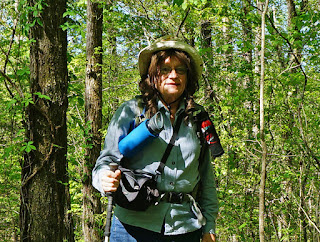I have had an intercourse with the earth. But I realize that reproducibility is an
essential requirement of relationship with the natural and of science. It differs profoundly from authoritarian ways
of thinking. The universe has stood these
past three weeks continually open to my gaze. From quarks to quasars, but more closely to
rocks.
Painters make patterns with spots of paint
poets make patterns with words
rocks make patterns with lichens and moss
mathematicians make patterns with ideas
and provide more accurate descriptions
no one knows why
they sit too close to the seat of secrets
These pages of an ancient seabed, now opened and turned on as
a book, are presented to us for understanding of prehistoric history. I have yet to understand their words, but I
few insights come after a tramp in the woods.
Thin layers of rock, just enough harder than their peers to
have survived and to show their words. Bloyd
Shale, Prairie Grove member of the Hale formation, Morrowan period, Pensylvanian
era of the Carboniferous Period. Derived from silt that settled in a warm ocean
some 300 million years ago. This according to a geologist’s map. I wonder.
Three weeks I showed pictures of leaves just emerging from
buds and I showed a hillside like this one that was brown near its top. Now, the leaves of spring are fully emerged
and the hills are no longer brown with bare branches, but green with summer
leaves.
A tornado passed through here a few months ago, driving this
broken tree deep into the ground. We
never hear about tornados unless they hit us. How unkind is that?
Just an interesting scene along a country road.
Farewell until next time.






















































